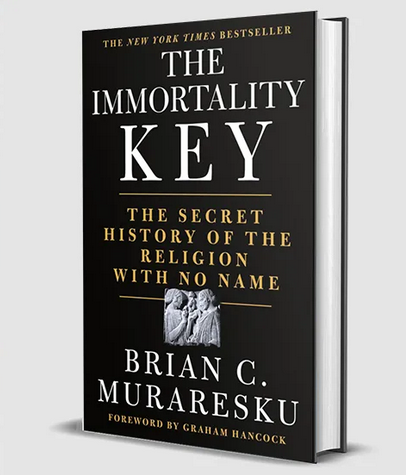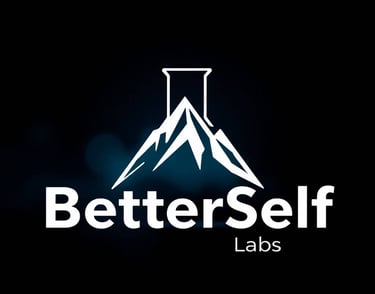Psychedelics, Eucharist, and Evidence: Reading The Immortality Key Without Drinking the Kool-Aid
Real argument: Early Christianity (and its roots in Greek mystery cults) may have been fueled by psychedelic sacraments, an entheogenic Eucharist later sanitized out of history. Verdict: Read for the investigation and questions; skip if you can’t tolerate ambiguity or marketing gloss on incomplete data.
BOOKS
11/16/20256 min read


The Big Idea
In blunt terms: Muraresku argues that a hidden, entheogenic tradition—psychedelic, vision-inducing sacraments—runs from the Eleusinian Mysteries into early Christian practice, and that this pharmacological thread was later repressed. The book tries to answer: Did Western religion once rely on chemically induced direct encounters with the divine, and did the Church bury the evidence? It doesn’t “solve” that question. It dramatizes the search.
What’s New Here (and Why It Matters)
The core move isn’t “what if drugs but church.” That’s old. The new piece is the forensic enthusiasm:
Direct collaboration with archaeochemical labs testing residue from ancient vessels and cups. Macmillan Publishers
Close reading of Greek and Latin sources, plus Christian texts, through an entheogenic lens.
Attempts to connect women-led sacramental practices and “poisoned” or “forbidden” cups with suppressed psychedelic rituals. panmacmillan.co.in
What matters: he drags the debate out of pure speculation and into a semi-testable arena—lab reports, inscriptions, stratigraphy. That doesn’t make his grand thesis proven. It does make the conversation more evidence-aware than your average “ancient ayahuasca cults” thread.
Core Arguments / Plot Architecture (spoiler-safe)
Act I: Eleusis & the Pagan Blueprint
The Eleusinian Mysteries as an initiatory rite possibly powered by a psychoactive kykeon. Evidence: textual hints, ritual structure, comparative pharmacology. Still contested.Act II: From Mysteries to Eucharist
Continuity thesis: symbols, language, and ritual logic suggest a throughline from Greek mystery religion to early Christian communion practices.Act III: The Forbidden Cup
Case-building around archaeological finds, suggestive art, and references to dangerous or ecstatic cups handled by women; frames this as a lost psychedelic technology suppressed by male Church authority.Act IV: Modern Science, Modern Psychedelics
Lab work on residues, modern clinical research on psilocybin and mystical experience (brought in rhetorically to make entheogenic worship feel plausible).
Evidence style: investigative narrative, travelogue, interviews, textual fragments, plus selected archaeochemistry. Not a monograph; a case presented to the jury of public opinion.
Deep Dive
Frameworks & Models (Nonfiction)
1. Entheogenic Hypothesis (Western Edition)
Claim: Major Western religious experiences were historically mediated, at least in part, by psychoactive sacraments.
How to use (intellectually): Treat it as a hypothesis grid:
Are there texts describing unusual perception?
Are there containers and residues supporting altered-state brews?
Are there ritual contexts that match known psychedelic phenomenology?
Where the book helps: it assembles these clues in one place.
Where you must be strict: correlation ≠ causation; vibe ≠ data.
2. Continuity Model: Eleusis → Early Christianity
Claim: Symbols, language, and liturgical echoes hint at inherited mystery-cult DNA.
Use: Ask in any “continuity” argument:
Is this continuity linguistic, thematic, geographic, institutional, or pharmacological?
How many links are speculative vs supported?
The book is strongest on thematic and symbolic overlap; weakest where it implies direct, uninterrupted psychedelic practice.
3. Lost Pharmacopeia Narrative
Claim: Women and marginalized practitioners guarded potent sacred recipes; institutional Church suppressed them.
Use: As an interpretive lens on:
who is labeled witch/heretic/poisoner,
who controls sacraments,
how fear of uncontrolled ecstasy maps to power.
Useful politically and culturally; uneven evidentially.
Evidence Check
Where it’s strong:
Takes archaeochemistry and material culture seriously (residues, cups, iconography).
Exposes how much of church-origin storytelling is theology first, data second.
Makes clear distinctions (often in the fine print) between documented, probable, and speculative.
Where it’s weak:
Inference stacking: Multiple “maybes” chained into a “likely” thesis.
Cherry-picking risk: Emphasizes artifacts and passages that support an entheogenic reading; quieter on counterevidence and null results.
Popularization gloss: Marketing language (“cracking the best-kept secret in history”) overshoots the actual state of proof.
Net: as long as you read it as a brief, not a verdict, it’s intellectually useful.
Assumptions Under the Hood
For the bolder claims to hold, several assumptions have to stack:
That Eleusis and related cults probably used psychoactive brews.
That early Christian groups both had access to and theologically integrated similar sacraments.
That suppression of such practices was systematic enough to nearly erase the record, but sloppy enough to leave recoverable crumbs.
That experiential parity (psychedelic vs mystical) implies historical continuity.
These are nontrivial assumptions. The book sometimes underlines them; sometimes rides past them.
Practical Takeaways
You’re not using this as a how-to manual (hopefully). Here’s what it’s good for:
Upgrade your conspiracy filter.
Treat any sexy historical claim as a chain: source → artifact → analysis → interpretation. Identify the weakest link.Rethink “safe,” sanitized religion.
Organized religion has a long, messy relationship with altered states—drugs, fasting, chant, ordeal. This book forcefully reminds you.Respect archaeochemistry.
Hard science can—and should—interrogate sacred narratives. That’s not sacrilege; that’s due diligence.Notice who controls ecstasy.
Whether or not every claim lands, the pattern—institutions fearing unmediated experience—is real and recurring.Apply the method elsewhere.
Any big story (corporate, political, religious) benefits from the same treatment: triangulate sources, follow the substances, ignore PR.Hold multiple models.
“All Eucharist was psychedelic” and “none of it was” are both lazy. The credible space is plural, local, evolving practices.
Contrarian Note
The central problem: the narrative voice sometimes behaves as if provocativeness = plausibility. The argument leans heavily on “isn’t it interesting that…” coincidences. Interesting is not enough. Why it matters: readers hungry for myth-busting can swing from naïve belief in Church dogma to naïve belief in the psychedelic counter-myth. Different incense, same uncritical mind.
Blind Spots & Risks
Overreach: The strongest data points support possibility, not a sweeping, unified psychedelic origin of Christianity.
Confirmation bias: The project starts with a romantic target; evidence is too often marshaled toward it, not against it.
Cultural flattening: “Psychedelic = authentic spirituality” is its own Western, 21st-century projection.
Misuse: Ideal fodder for lazy hot takes and content grifters who won’t distinguish speculative from supported.
Who Should Read This (and Who Shouldn’t)
Read if:
You’re into religious history and can handle your priors being poked.
You care about the intersection of psychedelics, ritual, and meaning—and want a semi-responsible popular entry point.
You’re a skeptic (of church or of psychedelics) who’s willing to engage with actual sources.
Skip if:
You demand ironclad academic consensus before you’re willing to entertain a thesis.
You dislike narrative nonfiction or author-as-protagonist investigations.
You’re looking for a devotional text, pro or anti; this will just agitate you.
How to Read It
Pacing: Read in 2–3 chapter chunks; keep notes.
Skim vs. slow down: Skim the travelogue flourish. Slow down on endnotes, citations, and any place he actually quotes primary sources.
Format: Print/ebook preferred; you’ll want to flip between text and notes.
Pro tip: After finishing, read at least one critical academic review to recalibrate.
Key Quotes (optional)
Not provided.
Scorecard (1–10, with one-line justifications)
Originality: 8 — Old questions, newly weaponized with lab tech and legal rigor.
Rigor / Craft: 6 — Better sourced than many pop-alt histories; still too much inference stacking.
Clarity: 8 — Engaging, cinematic, easy to follow.
Usefulness: 7 — Great as a hypothesis map and method demo, not as conclusion.
Re-read Value: 7 — Worth revisiting around new archaeological or psychedelic research.
If You Liked This, Try…
Food of the Gods (Terence McKenna): The speculative godfather of entheogenic history-wilder, less disciplined.
The Road to Eleusis (Wasson, Hofmann, Ruck): Classic entheogenic Eleusis thesis; shorter, more technical.
The Sacred Mushroom and the Cross (John Allegro): Extreme, controversial; read as a cautionary tale in overreach.
Ancient Wine (Patrick McGovern): Hardcore archaeochemistry of wine and ritual without the hype.
The Fellowship of the River (Joe Tafur): Modern entheogenic medicine; useful contrast between evidence and experience.
FAQs
Q:Does the book “prove” early Christians used psychedelics?
A:No. It assembles suggestive evidence and arguments. Proof is too strong.
Q:How do scholars view it?
A:Mixed. Some praise the research hustle; many critique leaps in logic and selective emphasis.
Is this anti-Christian?
Not necessarily. It can be read as an attempt to recover a raw, experiential core of the tradition. How threatening that feels depends on your theology.
Can I trust the science parts?
Partly. The labs and methods cited are real; interpretations sometimes go beyond what the data strictly supports.
Will it help me understand modern psychedelic therapy?
Indirectly. It gives historical and cultural context, but it’s not a clinical or how-to text.
Final Verdict
The Immortality Key is better than its breathless marketing and worse than its most enthusiastic fans. As an investigation, it’s energetic, curious, and occasionally overcaffeinated. As a proof, it falls short and that’s fine, if you don’t force it to be one. For readers who can handle “fascinating, incomplete, proceed with rigor,” it’s a buy. For anyone chasing either cheap debunking or instant new dogma, it’s a borrow and a reminder that intellectual psychedelics demand the same respect as chemical ones.




